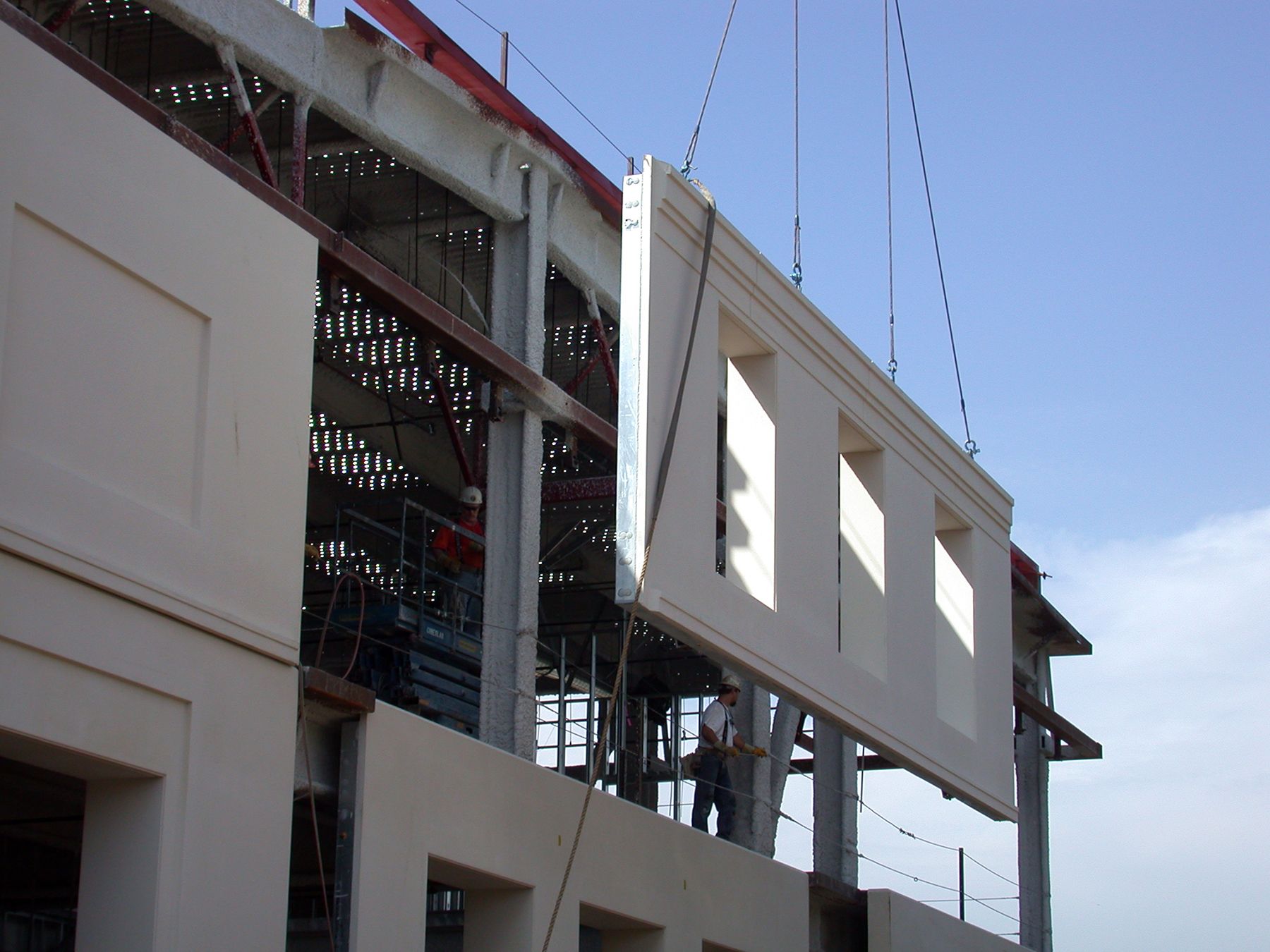Every construction material has advantages and drawbacks, making the building process either simpler or more challenging. Insulated precast is no exception. Whether you’re constructing a modest building or a huge office complex, it’s important to understand what to anticipate from precast concrete materials. In this read, we look at the pros and cons of insulated precast.
Pros
Precast concrete materials are popular for a variety of reasons. Below are five:
1. Speed of Construction
Insulated precast systems can be used for precast systems for the whole building envelope, including the insulation, exterior membrane, interior finish, and moisture barrier. This can significantly reduce the time needed to finish the building envelope.
Additionally, insulated precast concrete panels are manufactured at an off-site location. When needed, they are simply transported to the job site and installed to ensure the project’s progress.
2. Versatility
Insulated precast concrete panels are a great alternative to replace exterior insulating, cladding systems, and structural elements. You can also substitute cast-in-place columns and/or steel columns with insulated precast concrete panels that act as a mechanism for containing the main wind and seismic force. Besides, using insulated panels saves costs since they shave off the extra expense of erecting columns and trusses.
3. Quality Control
At precast concrete production plants, skilled personnel work in the same equipment and controlled environments on similar or comparable jobs. They eventually master the art of making high-quality precast concrete panels.
On-site products, on the other hand, usually have fewer quality control procedures. Since they are rarely manufactured in a controlled setting, the products are susceptible to delays and quality issues, which are exacerbated by unfavourable weather and substandard concrete.
4. Energy Efficiency
Compared to other construction materials, precast concrete has a high thermal mass, which is the ability of materials to absorb, store, and release heat. Concrete’s natural capacity to absorb and store heat and cold helps precast concrete insulated panels delay and reduce HVAC loads. This may lower the initial cost of construction since a lower-capacity HVAC system is enough for a structure.
The slowed release of heat and cold means the concrete’s thermal mass can shift demand to off-peak times when utility rates are lower, which further reduces energy costs. Because of the exceptionally tight building envelope produced by the use of insulated precast concrete panels along wythe connectors that have low heat conductivity, precast structures are energy efficient. Transfer of heat from the interior concrete wythe to the exterior concrete wythe and vice versa is reduced by low heat conductivity wythe connectors. As a result, heat is retained indoors during the winter and outside during the summer.
5. Fire Resistance
Concrete naturally has fire resistance levels, unlike other materials. The cost of insurance for a concrete structure tends to be lower than that of an ordinary stick-built home. The concrete wythes that sandwich the rigid insulation offer fire protection for the insulation.
Compared to concrete, a standard dry-walled interior finish is flammable and degrades quickly. In a conventional wall, the insulation will start to release dangerous compounds once the drywall has deteriorated. Insulated precast concrete panels significantly delay the discharge of these dangerous substances inside the building envelope.
Cons
Precast concrete offers several benefits. However, it has a few drawbacks as well. Here are the top four drawbacks of insulated precast concrete.
1. Higher Upfront Costs
Upfront, precast concrete typically costs more. Even so, it is cheaper than brick or stone. The higher cost may come as a surprise if you are accustomed to purchasing inexpensive building supplies.
The good news is that, over time, precast concrete offsets the high upfront costs. Because concrete is naturally strong and durable, maintenance is often minimal throughout its life. Precast concrete is also one of the longest-lasting construction materials.
2. Transportation Issues May Arise
Transportation of insulated precast concrete can be expensive and sometimes takes a long time, especially if the location of your project site is remote. Also, if there are traffic issues along the way, delays may occur. Fortunately, a majority of transport-related problems can be quickly remedied.
3. Poor Installation May Cause Problems
The best way to avoid issues with installation is to work with an expert precast concrete company. Insulated precast panels require crucial connections, and poor installation may result in faulty connections, compromising the structure. Additionally, sound insulation and water damage capabilities may be affected.
4. Modifying Precast Concrete Can be Challenging
Insulated precast concrete offers a wide range of design options to help you build a structure you’ll love for years to come. Regrettably, it can be challenging to make alterations once constructed.
Modifications may require changes along the entire structure since the panels are stacked together like Legos. In some cases, the panels may end up being put under too much stress. A precast concrete manufacturer takes their time with the design phase to minimize the need for future modifications.
Conclusion
Insulated precast concrete panels allow fast, eco-friendly construction that requires almost no maintenance. Whether you are a building owner, engineer, or architect, don’t just settle for what is familiar. By selecting insulated precast concrete panels for your next project, you can take advantage of the numerous environmental, architectural, structural, and energy-saving benefits.

